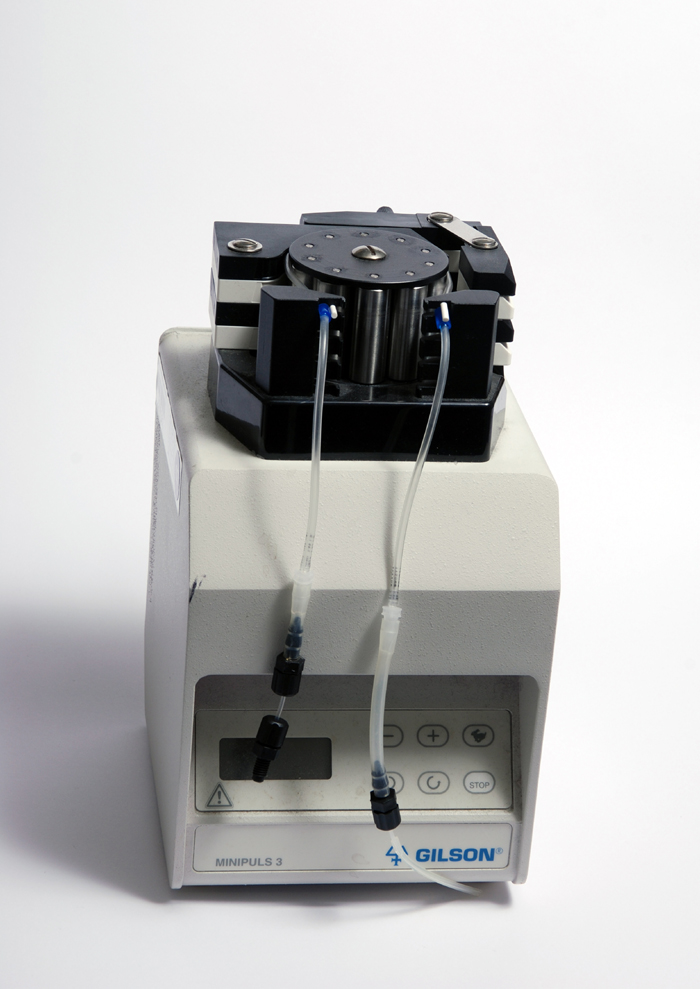
There are many uses for pumps, but the two most common and versatile are syringe and peristaltic pump systems. But picking the best is always challenging. As a rule, peristaltic pumps are used in industrial and laboratory processes. It is important for users to understand the systems and how to compare different technologies properly.
Peristaltic Pump
If you need to pump fluids, this positive displacement pump is what you need. Using these pumps while handling reactive or sterile materials is common practice. This is because the liquid cannot be contaminated by touching the pump components. As a result of their small size and effective functioning, peristaltic pumps are ideal for use in laboratories. Also, you can use them to swiftly administer several smaller portions of solutions, like buffers and culture media. Although these pumps are cost-effective due to their diminutive size, they are not ideal for applications requiring a consistently stable flow rate. This is because their mechanical spinning causes pulsing at low speeds.
Syringe Pump
These are specifically engineered for the precise administration of minute volumes of liquid in a sterile, inert setting. Syringe pumps are inherently unremarkable in terms of flow rate and capacity. But they are reliable and produce a very smooth flow. Because of this, they are perfect for use in the lab, including fluid dynamics. Supercritical water gasification-regulated medicinal agent infusion into patients and calibrant infusion into mass spectrometers are some of the many uses for these pumps. This means efficiency and durability are key features when shopping for syringe pumps.
Types of syringe pumps
- Medical Infusion Pump:
These devices can administer blood, drugs, and nutrients to patients in precisely measured amounts. Research, treatment, and diagnosis can all make use of this infusion pump type.
- Laboratory Syringe Pump:
In scientific settings, these devices are ideal for tasks that necessitate the precise administration of fluids. Pumps designed for use in laboratories sometimes have a lower volume capacity and more advanced capabilities than their medicinal counterparts. Examples include syringe pumps with many syringes and those that can infuse and remove fluids. High-pressure syringe pumps and OEM module syringe pumps. Recent industrial applications have proven the usefulness of the high-end pressure syringe pump and OEM module syringe pump.
Advantages and disadvantages of a syringe pump:
Advantages:
- You can manage the temperature with these devices because they include an in-built heater.
- By linking syringe pumps to a computer, nurses may program devices to record infusion histories more accurately and with fewer mistakes.
- Syringe pumps are incredibly precise instruments that can facilitate the delivery of picoliter-scale volumetric flows.
- They have the capability to transport more viscous fluids.
- A steady flow of fluids is ensured because they enable the doctor to establish a goal pressure and regulate. This profoundly affects the course of the patient’s illness and their ability to recover.
Applications
- Biomedical Research
Syringe pumps provide for the continuous flow of chemicals. This is essential in biomedical research due to the complex processes involved in experiments. Research involving tissue engineering, cell cultures, and medication delivery relies on this.
- Analysis of Chemicals
Thanks to them, scientists can now mix and deliver chemicals with pinpoint accuracy. This degree of control is invaluable in analytical chemistry, where even little changes can have a big effect on results.
- Pharmaceutical Industry
Syringe pumps are often used in pharmaceutical research due to the high precision required. They ensure the precise administration of pharmaceutical ingredients. This aids in the creation of safer and more effective medications.
Advantages of peristaltic pumps
- Since peristaltic pumps do not allow backflow, they are known as non-siphoning pumps. Dispensing becomes more precise as a result.
- Peristaltic pumps are compatible with a wide range of liquids thanks to more than 20 different tubing formulas and sizes.
- Certain peristaltic pumps can change speed, making them perfect for dosing.
- A peristaltic pump is perfect for working with cells and big proteins. This is due to its gentle pumping action and low shear, which prevent the content from being damaged.
- Because the peristaltic pump is not in contact with the fluid, no moving components need cleaning, including seals, diaphragms, and valves. Changing or cleaning the tube is all that’s required. Maintenance times are reduced because of this fast tubing replacement.
- Self-priming—these devices have a suction lift of up to 8.8 meters and can suck fluid into the tube when they are dry to start. Filling other pumps with fluid before using them can be a hassle and a safety risk because of the suction line and pump.
- The tubing is the sole component of a peristaltic pump that has direct contact with the liquid. Both the fluid and the pump are kept sterile in this way.
Common applications for a peristaltic pump
- Spray coating dispensing
- Transfer of fuels and lubricants
- Cell media harvesting
- Ultrafiltration
- Pizza sauce dispensing
- Manufacturing IV bag dispensing
- Culture-specific nutrient supply
- Dispensing acids and bases
- Dispensing sterilized media
- Dispersing cosmetics
- Aspiration of tissue culture medium
- The manufacture of circuit boards
- Cell suspension circulates during fermentation.
- Vitamin A and vitamin D injections
- Glue emulsion dispensing
- Juice production
- Adhesives for cement
Comparison
Syringe pumps offer greater flow control and are primarily used in applications that require this exceptional flow, such as micro- and nanomanufacturing, microfluidic reactors, fluid batteries, and many more. In contrast, peristaltic pumps are relatively inexpensive. While syringe pumps are compatible with traditional GC/MS and HPLC systems, peristaltic pumps are superior for large application volumes. Biotechnological fields necessitate intricate procedures like therapeutic interventions and gradients of drugs, and syringe pumps are the most dependable tool for these tasks.
Conclusion
A peristaltic pump is ideal for metering clean, aggressive chemicals in a high-pressure setting. Talk to the experts at Express Drainage Solutions about your options; they know the industry inside and out.
